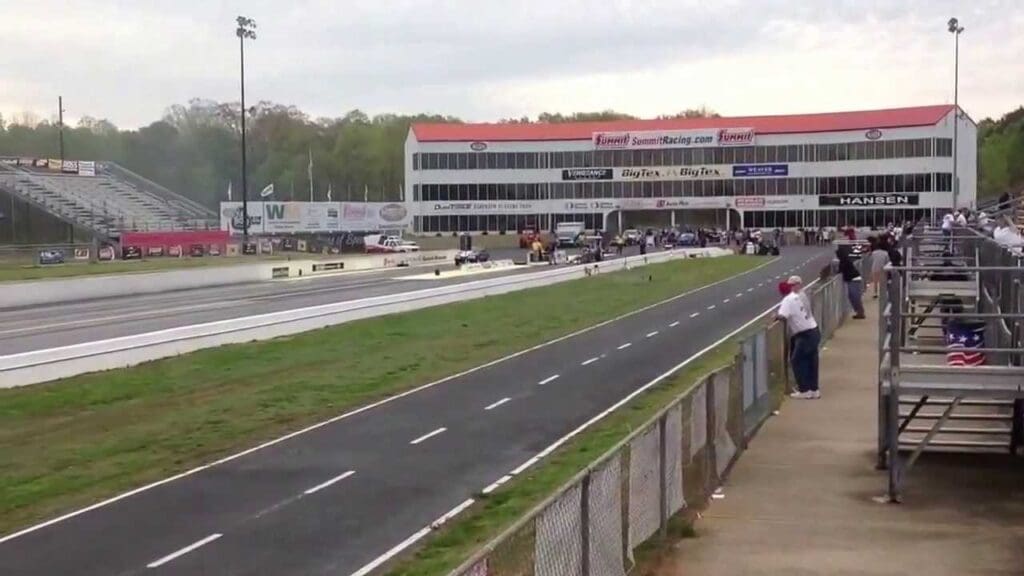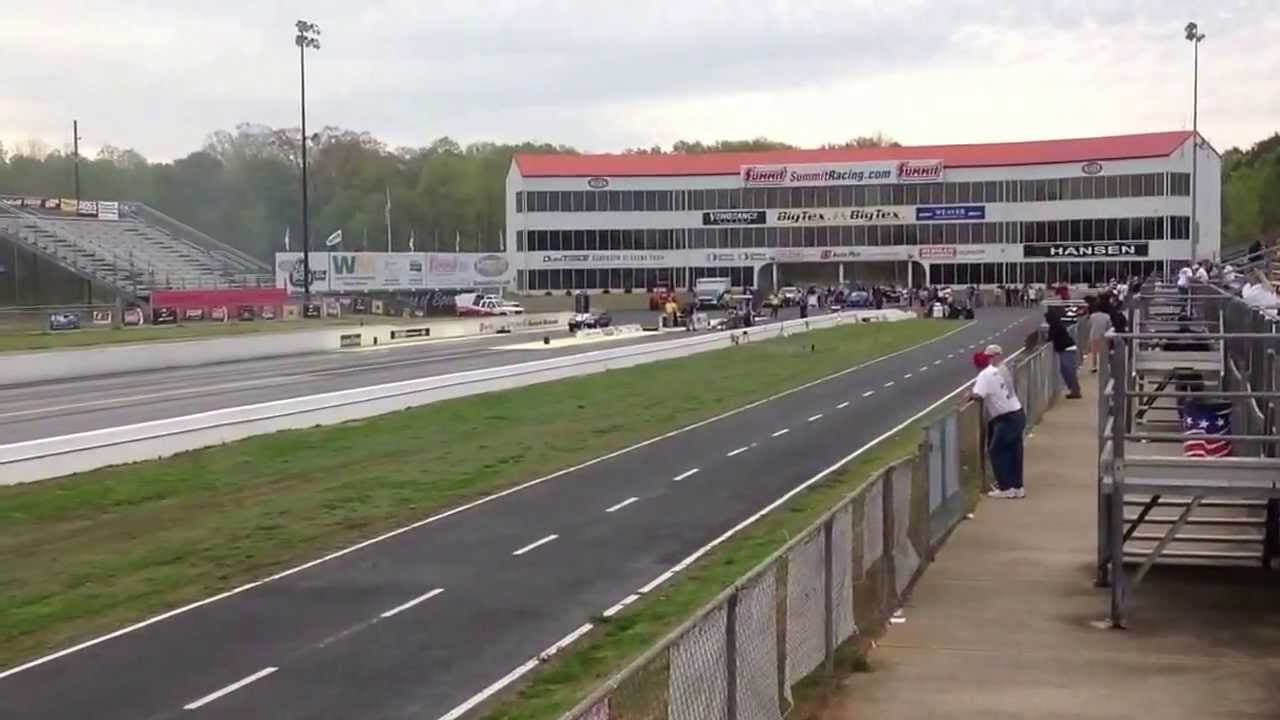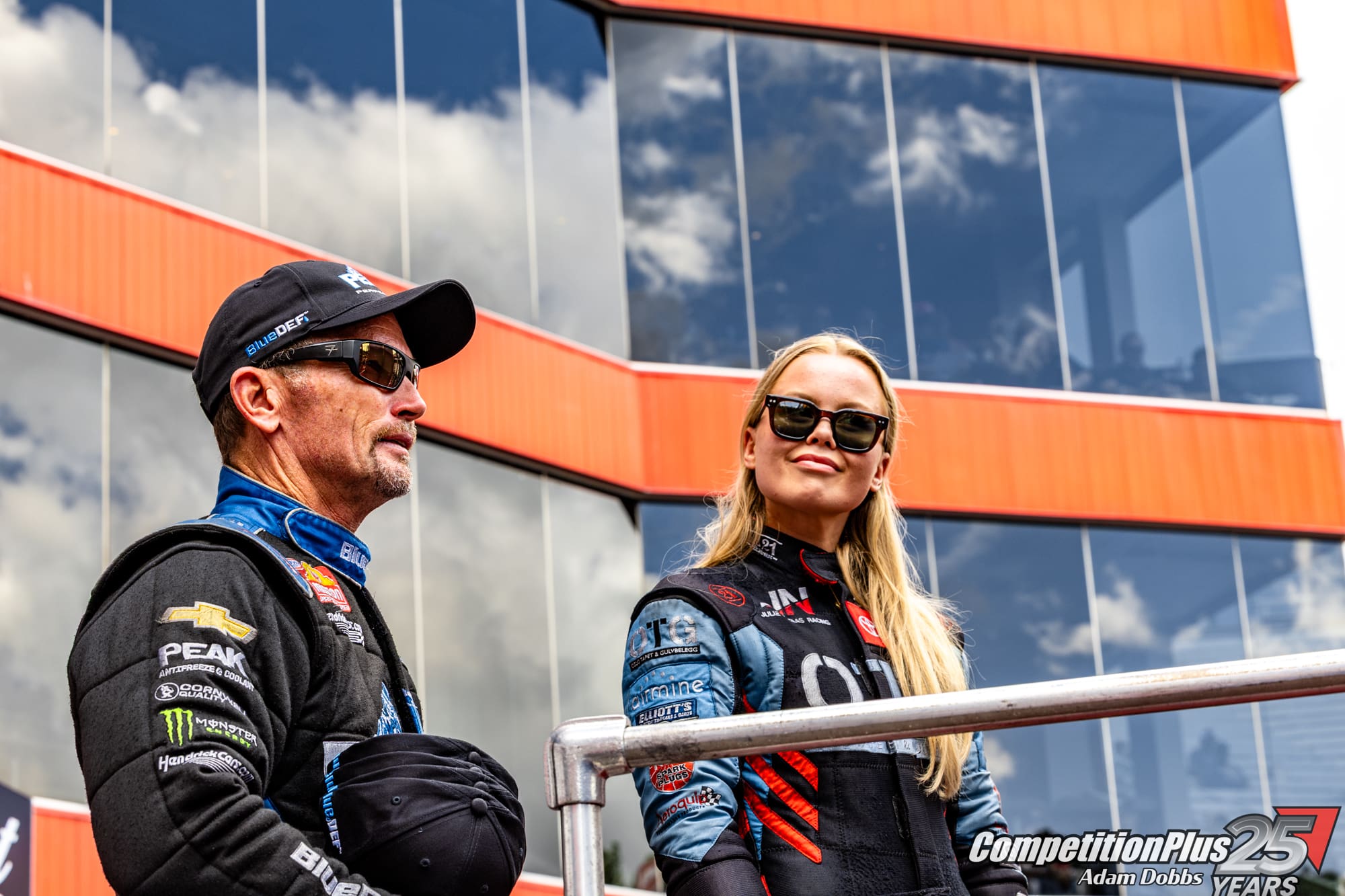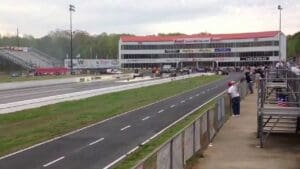
The discussion could only happen after the track was gone. With Atlanta Dragway gone in favor of a battery manufacturing facility, the real story is coming out.
Atlanta Dragway was a political pawn, and when its use was over, it disappeared.
The first dirt moved towards Atlanta Dragway was in 1968, and it was third owner Gene Bennett who finally made it stick. The fact it was declared an Atlanta drag strip was a big misnomer considering it was roughly 68 miles outside of the metropolitan city.
The most significant selling point for Atlanta Dragway was that it was a facility the late IHRA founder and president, Larry Carrier, coveted.
“Larry Carrier wanted a drag strip in Atlanta badly,” noted drag racing historian Bret Kepner said.
Carrier had just brought in the RJ Reynolds Tobacco Co. and its Winston brand and needed a fresh new facility in which to entertain the RJ Reynolds brass.
Essentially, Atlanta Dragway was a newer track built with the same specs as Rockingham and Darlington, with a large tower and grandstands so close to the action a race fan could nearly reach out and touch the cars. The drag strip hosted its first IHRA national event in the spring of 1976.
When Norman “Moose” Pearah took over Atlanta Dragway in July 1980, the facility moved from IHRA to NHRA and hosted the inaugural NHRA Southern Nationals in April 1981, on the date previously reserved for the IHRA’s Dixie Nationals.
For all of its glory and beauty in those early days, Atlanta Dragway, according to those working in the industry at the time, was not a large profit center.
STORY CONTINUES BELOW VIDEO

“Nobody was making big money by running Atlanta Dragway, but the location was something NHRA really needed to impress the Winston upper management who at that point were involved with both [sanctioning bodies],” Kepner said. “So at that point, the IHRA brought their Winston brass into Rockingham, and the NHRA brought theirs into Atlanta, and the RJR brass didn’t think anything of it. They just knew about the drag strip, that they sponsored drag racing, and they went to Atlanta once a year. They didn’t care what letter was on the gate.”
Then came along Texas Motorplex and Billy Meyer created a specialty race for RJR, and they soon moved their program to one of the seven wonders of the drag racing world. However, when Meyer made the ill-fated purchase of the IHRA in 1988, the Winston All-Stars event moved to Atlanta Dragway, and along with it came Steve Earwood, who revamped the facility and renamed it The New Atlanta Dragway. – Moose sold it to Gary Brown, Jerry Brown, Rudy Bowen, and John JD Steven.
Earwood didn’t stay long in Atlanta before he became part of an ownership group that purchased Rockingham Dragway and brought along the Winston All-Stars event.
Gary Brown purchased Atlanta Dragway and later sold it to NHRA in 1993. Whether it was purchased to prevent the real estate from being purchased by Home Depot remains to be seen. The track found itself in the right place at the right time in 2002 when the Atlanta, Ga.-based Coca-Cola took over the series sponsorship when RJ Reynolds was forced out of motorsports.
“The place was always packed for the national events, and it was largely because of an abundance of promotional tickets distributed in advance,” Kepner explained. “Yes, there were paid tickets, but those were in the minority.”
Following the pandemic-afflicted season, when Coca-Cola left NHRA, Atlanta Dragway became expendable, with two other national event facilities [Bristol and Charlotte] drawing from the same demographic pool.
The 318-acre Atlanta Dragway was sold to Terra Commerce LLC.
And after 46 years of serving the drag racing world, the once-coveted drag strip is part of a real estate deal for a community that was once just an exit off of Interstate 85.







































